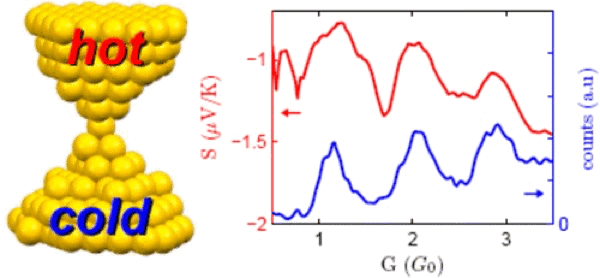Thermopower of metallic atomic-size contacts
24/01/15 16:12
Thermoelectric devices hold the promise for helping to solve key problems related to energy conversion and refrigeration. The discovery that nanostructured materials may enhance their efficiency underlines the need to understand the mechanisms that govern thermoelectricity at the nanoscale. Although notable progress has been made in this respect, there remain basic open problems. Thus for instance, it is still unclear what determines the thermoelectricity in a metallic atomic-size contact, a system that has become a test bed for the fields of nanoelectronics, mesoscopic physics, and molecular electronics. In this work, we present a combined experimental and theoretical study of the room temperature thermopower of metallic atomic-size contacts. In particular, we report conductance and thermopower measurements of gold and platinum atomic contacts using a scanning tunneling microscope (STM). We find that few-atom gold contacts have an average negative thermopower, whereas platinum contacts present a positive thermopower, showing that for both metals, the sign of the thermopower in the nanoscale differs from that of bulk wires. We also find that the magnitude of the thermopower exhibits minima at the maxima of the conductance histogram in the case of gold nanocontacts while for platinum it presents large fluctuations. Making use of tight-binding calculations and Green function techniques, together with molecular dynamics simulations, we show in this work that these observations can be understood in the context of the Landauer-Büttiker picture of coherent transport in atomic-scale wires. In particular, we show that the differences in the thermopower between these two metals are due to the fact that the elastic transport is dominated by the 6s orbitals in the case of gold and by the 5d orbitals in the case of platinum.


